SHOCK – Councils Find UK Mobile Coverage Estimates Unreliable

The Local Government Association, which represents hundreds of councils across England and Wales, has finally figured out what almost everybody else has known for years, that those mobile network coverage (3G, 4G, 5G etc.) checkers – usually run by operators – are not a particularly reliable gauge of signal quality.
According to the LGA, some councils’ are finding that where mobile coverage is reported by such checkers as being “supposedly fast and reliable, users have [instead] frequently reported being unable to make phone calls or get online” (mobile broadband).
The association fears that this could be a particular problem when it comes to the task of holding MNOs – Three UK, EE, O2 and Vodafone – to account if they miss their future targets. All of this will be key to the new Government supported, but industry-led, £1bn Shared Rural Network (SRN) that aims to extend geographic 4G coverage to 95% of the UK by 2025.
Advertisement
“By relying solely on operators’ own computer modelling rather than on the ground testing, the Government and Ofcom are at risk of letting operators mark their own homework,” said the LGA. Instead the association is calling on the Government to give Ofcom the powers to independently verify coverage, with local areas given “annual speed and reliability health checks” using on-the-ground testing.
Cllr Kevin Bentley, Chairman of the LGA’s People and Places Board, said:
“The industry’s proposal to increase mobile coverage across local areas is a positive step. However, we know that the way mobile operators and Ofcom measure outdoor coverage does not account for real life experience.
Like housing, education and transport provision, digital connectivity is central to thriving communities – with millions of people relying on mobile coverage every day, including businesses and our most vulnerable. It is important our communities are not cut off from the digital age.
Councils are government’s key partners in driving improvement in people’s lives across the whole country. Before the Government signs up to any new deal, we want to work with them to ensure that we can properly measure whether mobile operators are achieving coverage that improves mobile signal in the real world, rather than numbers on a spreadsheet.”
As ever the biggest challenge here is the fact that mobile (radio) signals are inherently variable and can change due to all sorts of complicated considerations. For example, changes in the weather, tree / plant growth, the device / hardware / antenna being used, location of the user (outdoor, indoor, underground etc.), the construction of new structures (buildings), interference and so forth all have a role to play.
Certainly we like the idea of more on-the-ground testing being done, but it too would have to consider the changing environment and conduct multiple tests over several days in the same location before being sure of an outcome. Even then the results may need to be repeated, perhaps annually, to reflect the ever changing environment. Repeating this across the whole of the United Kingdom sounds like an expensive headache.
Data from third-party crowd-sourced solutions (e.g. Opensignal, Tutela) can help to illustrate the problem, although it’s harder to produce a scientific baseline without exact knowledge of what the end-user was doing at the time of a test (e.g. was it an idle test while the phone was in their pocket or were they holding it up in the air etc.) and limiting tests to only specific hardware.
Advertisement
Nevertheless it would be interesting to see a few more scientific, on-the-ground studies to help verify coverage and the LGA gives some examples of where councils may already be trying something similar. However it will be important to establish some sort of standard for this, otherwise any data collected may be useless if different methodologies are adopted.
Examples of Recent Studies
* Shropshire Council is undertaking work to verify coverage. Working with local parish councils, it has already found 28 areas where operators’ outdoor coverage claims fail to match the quality of coverage on the ground and has asked them to take action.
* In Cambridgeshire & Peterborough Combined Authority, the Connecting Cambridgeshire programme has drawn up a ‘Top 20’ list of priority areas identified by comparing detailed local mobile connectivity surveys commissioned by Cambridgeshire County Council with the latest Ofcom mobile coverage data. The list of partial not-spots has been shared with mobile network operators for collaborative action, following a summit convened by Mayor James Palmer.
Mark is a professional technology writer, IT consultant and computer engineer from Dorset (England), he also founded ISPreview in 1999 and enjoys analysing the latest telecoms and broadband developments. Find me on X (Twitter), Mastodon, Facebook, BlueSky, Threads.net and Linkedin.
« ISP People’s Fibre Aim FTTP Broadband at Poorly Served Areas










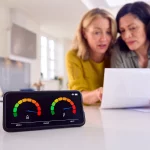

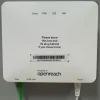
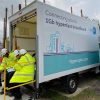
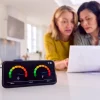
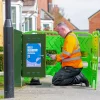







































What about raising the limit on mast height?
Already being considered:
https://www.ispreview.co.uk/index.php/2019/08/improved-mobile-planning-rules-and-30-for-rural-areas-to-trial-5g-tech.html
The funnies was Ofcom confirming in writing 02’s 98% (95% by Nationa)4G coverage obligation in March 2018, while 02 announced they had yet to meet 95% in Scotland in January last year.
Perhaps LGA should speak with those councils that refuse to have rooftop installation on council buildings.
95 or 98% coverage is all well and good but what % of those 95% actually have any capacity behind them along with 4G Adv Pro and 3CA?
Where I live EE tells me unreliable coverage indoors, but okay outdoors, and it is exactly that. I’ve also been on holiday in the UK in the middle of nowhere and EE has told me no coverage, but I did have coverage, not the best signal, but it was there and usable. So there are instances where no coverage is reported but there is some. This just comes down to the fact that computer models are not 100% accurate. Unless the council research is also including positive inaccuracies (no coverage reported but there is some) as well as negative inaccuracies, they shouldn’t jump to the conclusion the inaccuracies are due to favouring better reporting than reality by the mobile companies for marketing reasons.
Sometimes it’s just rubbish, how can there be in my for example, “High quality indoor outdoor 3G coverage” From a mast 3 miles away not even line of sight? They haven’t taken topography of the land in their computer simulation at all, just lies.
Aren’t most rural areas AONB or conservation areas etc, so raising mast heights aren’t possible? And probably the biggest obstacle Nimbys and greedy landowners. Why don’t the government get a company, and equip vehicles with transmission signal strength monitoring equipment and map pretty much every road in UK like google did for their street view, you would probably get a more accurate picture, then networks can answer and rectify their lies.
I use Root Metrics app & OpenSignal to check coverage if I’m traveling somewhere else in Britain in addition to Three’s coverage map.
These Third-party apps ‘can’ map coverage more accurately. But I wonder if they give results to the MNOs.
I often put Root Metrics app on to run & collect measurements when I’m the car. The app can happily run on Android behind another app.
The other thing is that Operator’s VoLTE networks can only be used if your phone is from them directly. There are still many users who just need a phone upgrade to take advantage of VoLTE/4G voice as well as 4G [data coverage] & 3G.
My current phone doesn’t pull in full 4G coverage here in my village but prefers to sit on VoLTE, where my previous phone pulled in full 4G coverage & all this is indoors. So the type of phone makes a difference too.
So many different things to consider, one could have no service on their phone but someone else in the same room could have full.
The Operators could certainly do more to help.
The SRN agreement can’t come quick enough. I really think restrictions on masts hights needs to be scrapped. It’s an out of date stupid rule.
Most networks now do let you buy handsets sim free and still access VoLTE and VoWiFi nowadays.
Hehe I have a EE/Three mast literally two minutes walk down the road (with no obstacales in the way of it) yet I still get very patchy 4G signal (and when I do get it the speeds are so poor ~20Mbps/10Mbps)
All four networks claim good to excellent coverage here. O2 there’s no signal at all, Three deteriorated to the point phone calls could no longer be made (VoLTE was available via phone override on very patchy 800Mhz), EE frequent drops, Vodaphone has very week 3G so takes ages to drop from 4G to 2G for phone calls.
It would help if the operators didn’t choose to restrict VoLTE, but still coverage problems.
Although the quote in the article suggests Ofcom relies on the operator’s data they appear to draw their own optimistic conclusions from it, giving even more overstated coverage.
“Data from third-party crowd-sourced solutions (e.g. Opensignal, Tutela) can help to illustrate the problem, although it’s harder to produce a scientific baseline without exact knowledge of what the end-user was doing at the time of a test (e.g. was it an idle test while the phone was in their pocket or were they holding it up in the air etc.) and limiting tests to only specific hardware.”
If the signal is so weak that using the wrong phone or putting it in your pocket means it can’t be picked up then it needs improvement anyway.
So while they’re no definitive sources, they’re at least valuable when they says there isn’t any coverage.
Need the Google street view vans to do another tour of the country, this time with signal monitoring gear in the back 🙂
good idea Gary! But it would cost a fortune and they couldn’t get a return?
It is the same with all the stats about superfast, it’s been turned into a superfarce – so many areas with sub meg broadband and so many ‘homes passed’ clouding the waters.
That’s what I suggested earlier.
So you did Mark, Thats what i get for commenting on the editorial without reading the responses.
Absolutely Chris, Wasn’t intended as a serious proposition, Just that they probably carried out the biggest survey of The UK in decades.
As for broadband stats I think a national campaign to get people to run a speed test would be incredible, but again who would want to pay for no return on the cost.
Speed tests only tell you about what people have now, not what is available to them. Also lots of work to get people to use Ethernet rather than WiFi etc etc etc For fixed line I do a comparison between available and how much it is used. Utilisation column on https://labs.thinkbroadband.com/local/councils
In respect to mobile which the LGA release is about, then things are even more complex as things will vary due to many factors and a car driving down a road with roof top antenna is going to give very different results that people in their home.
On what Chris says, well aware of the hatred of premises passed as a measure, but premises need to be passed first and short of forcing everyone to upgrade to the best available as soon as its available then premises passed is always going to be higher than the premises connected. That is a global statement, not just UK.
@CC – exactly what is the problem with premises passed numbers?
No hatred of premises passed as a metric Andrew beyond from a few, frankly, weirdos involved with altnets.
Best ignored, much as they pop up, do their trolling, and ignore any feedback that doesn’t fit their world view.
Those of us living in the real, bigger world are better served leaving them to it. Localism is fine except when used as a base to measure everyone else by, then it’s just parochialism.
The car system would help reduce the lies of the networks where they say 2/3/4G is available and it is blantely non existent,
Another issue of the maps being unreliable is that if they say you can get a reliable signal, then you are not eligible for a universal service obligation connection and are told to use a 4G router. There is a 182m hill between me and the mast but the map says I can get a signal.